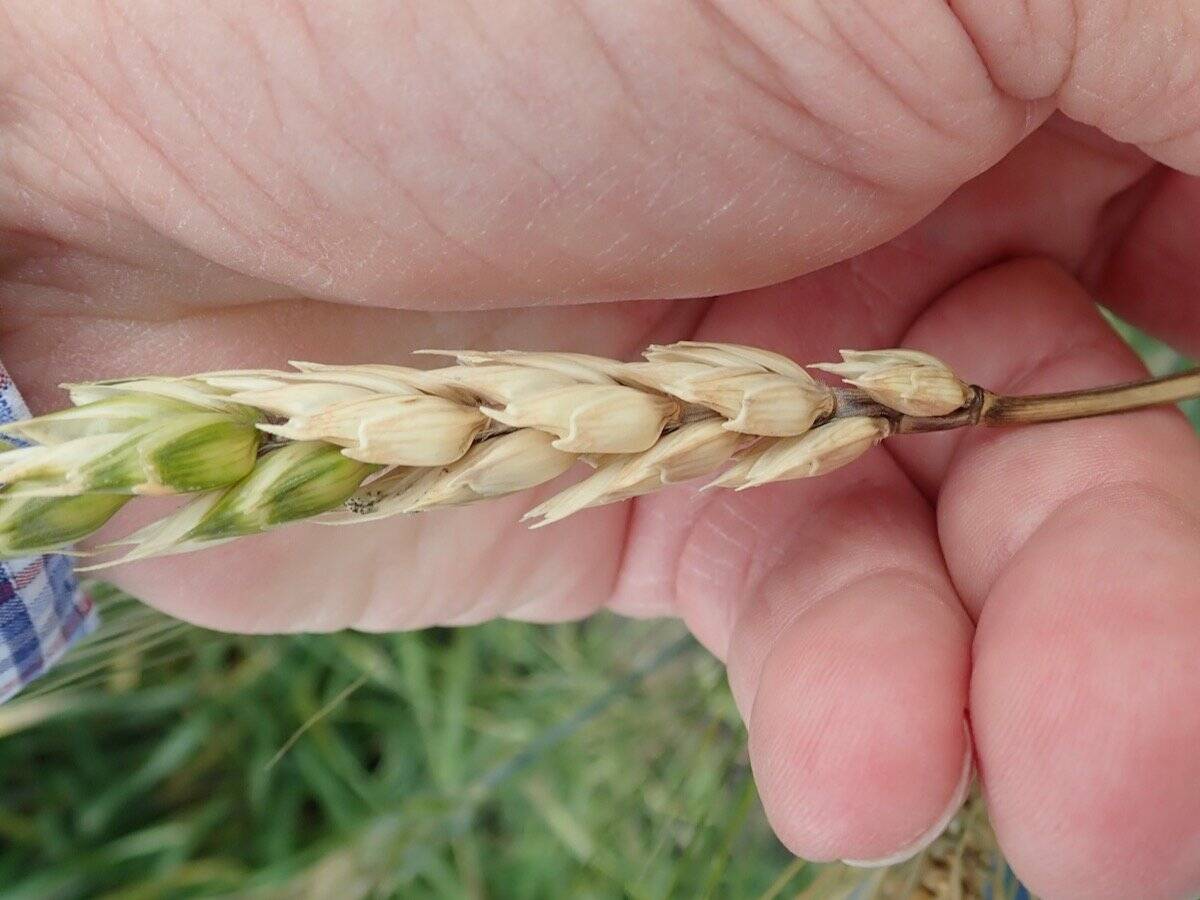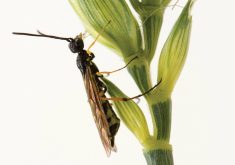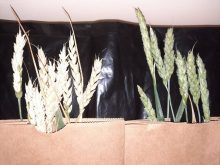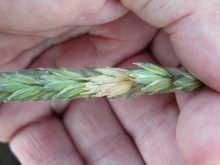
John has a 3,500-acre mixed grain and cattle farm not far from Brandon, Man., where he grows wheat, barley, canola and hay. John called me one day shortly after harvest when he ran into trouble at the grain elevator.
As he explained over the phone, the problem was his wheat didn’t qualify as identity preserved (IP) grain. That meant a less profitable crop, and John was understandably upset.
“They’re telling me at the elevator that the wheat protein tested at only 12.5 per cent, and I need 13 to market it through the IP program,” he said.
John was at a loss to explain why, since it’d been a good-looking wheat stand all season long and he couldn’t recall anything that might have caused the protein content to take a hit. I had been in the wheat field myself several times during the season and hadn’t noticed anything out of the ordinary either.
Read Also

Fusarium head blight mycotoxin detector in the works
Prairie farmers and agronomists needing a more definitive process to detect fusarium infection in cereal grains, particularly barley, may get such a process out of research underway at the University of Saskatchewan.
As John and I searched for an explanation, we considered whether the protein problem could have been caused by a nitrogen deficiency, since the nutrient is essential for protein development in wheat. There was no clear answer, however, as John had gone with a similar fertilizer program he’d used with past wheat crops on that field, which up until now had produced grain with higher protein content.
I was aware that high-yielding wheat can sometimes result in lower protein content due to the dilution effect in the grain — but the yield of this crop was only slightly above average.
I also knew the soil in the field was sandy and had a very low cation exchange capacity, which led to previous wheat crops planted there to dry down earlier than in John’s other fields with more clay. I wondered if the crop maturing more quickly could have influenced the protein content.
It was only when John and I started to recount the weather conditions over the past summer that the solution to this mystery began to emerge.
Crop Advisor Solution: Nitrogen leaching to blame for low protein wheat
John and I recalled there had been a period of heavy rainfall at the end of June, when just over six inches fell in under a week. Because of the soil’s low CEC, I thought it possible the nitrogen in the soil had been leached down below the rooting zone and was unavailable to the plants when they needed it for protein synthesis.
We sent a soil sample from the field in for testing and the lab results showed a low nitrogen level in the soil at the surface and at depth. It wasn’t as low as I had expected, but I thought it was likely that a flush of mineralization and capillary action in the weeks following the heavy rain had brought some nitrogen back up to the root zone, but probably too late for the crop to make use of.
While there wasn’t anything John could do about his low protein wheat crop, at least he now knows just how susceptible nitrogen can be to leaching, especially in fields with sandy soils and after intense rain events, as there had been in June. In the future, he can take steps to avoid a similar problem by utilizing enhanced efficiency nitrogen fertilizer or by splitting his nitrogen application and applying some in-season.
Kathy-Jo Toews, CCA, works for Richardson Pioneer Ltd. in Brandon, Man.















